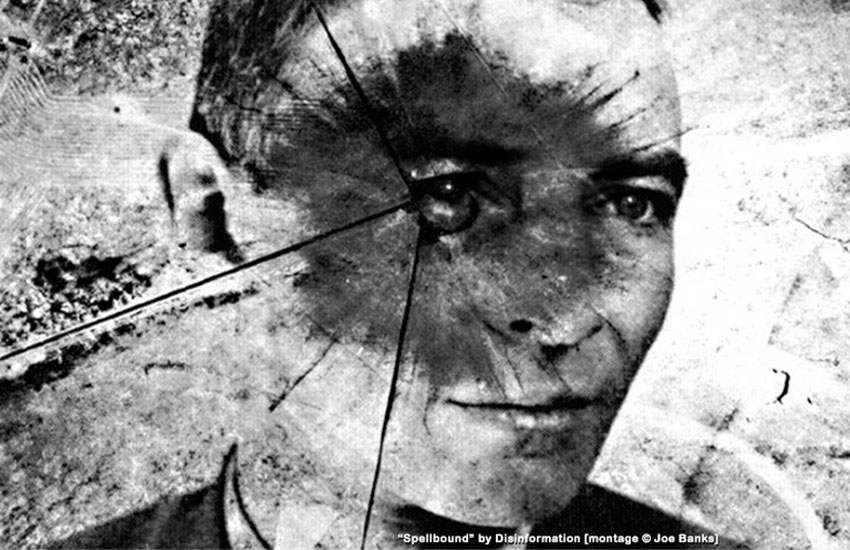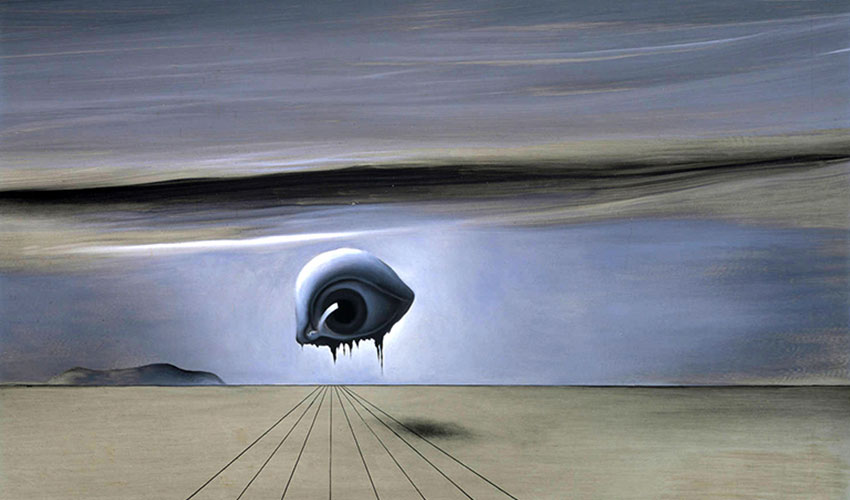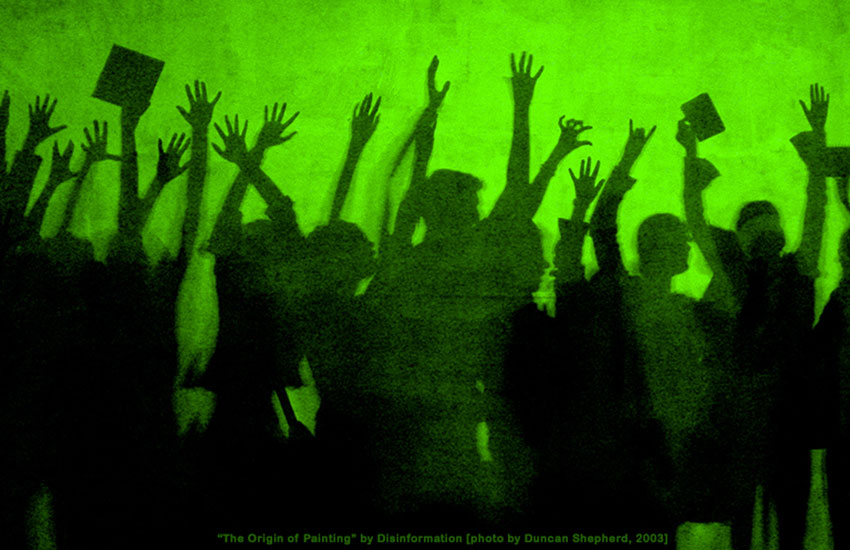Text by Joe Banks

The effects could well be called unprecedented, magnificent, beautiful, stupendous, and terrifying. No man-made phenomenon of such tremendous power had ever occurred before. The lighting effects beggared description. The whole country was lighted by a searing light with the intensity many times that of the midday sun. It was golden, purple, violet, gray, and blue. It lighted every peak, crevasse and ridge of the nearby mountain range with a clarity and beauty that cannot be described but must be seen to be imagined. It was that beauty the great poets dream about but describe most poorly and inadequately. Thirty seconds after the explosion came, first, the air blast pressing hard against the people and things, to be followed almost immediately by the strong, sustained, awesome roar which warned of doomsday and made us feel that we puny things were blasphemous to dare tamper with the forces heretofore reserved to The Almighty. Words are inadequate tools for the job of acquainting those not present with the physical, mental and psychological effects. It had to be witnessed to be realised. – Brigadier General Thomas F. Farrell, 18 July 1945 [1].
In Sept 1998 and June 1999, the artist’s project Disinformation co-curated two electronic music and installation art events inside a massive underground nuclear warfare command centre, former (subsidiary) Regional Seat of Government (North Zone), under a field near Troywood, Anstruther, Fife (near RAF Leuchars). An A4 leaflet circulated at the later event asserts that (quote) the invention of nuclear weapons (was) the ultimate artistic project of the 20th century, being careful, however, to balance that (deliberately provocative) assertion with the blunt rejoinder that nuclear weapons simultaneously represent the zenith of human intellectual creativity and imaginative abstract thought, and the ultimate historical expression of the ghostly, morbid, destructive aspect of the suppressed unconscious mind. The leaflet goes on to state that “the unimaginable beauty and awesome sonic power of atmospheric nuclear explosions are matched only by the appalling tragedy of their human, environmental and political costs” [2].
The text of the Disinformation project’s leaflet goes on to state that “the theological ramifications of nuclear weapons were quite obvious from the outset”, then to state (wrongly, as it happens) that nobody knows who christened the test site at Alamogordo, White Sands, New Mexico as Trinity (it turned out to have been the father of the atom bomb, Manhattan Project director J. Robert Oppenheimer), then to claim (correctly) that “it is hard to imagine a more appropriate name”, because “the thermonuclear flash is a sacrilegious parody of the act of biblical creation” [3]. Finally, the leaflet describes this detonation as declaring war, in the long term, not so much on specific political targets, but upon reality itself.

Art is not necessarily science, but science is always art [4][5], and, provocative as these statements were meant to sound, the proposition that nuclear weapons can be considered artworks was also inspired by concepts of Auto-Destructive Art devised by the hugely influential artist and peace campaigner Gustav Metzger [6]. Likewise, the notion of war on reality extrapolates an idea implied by the poet Hermann Hagedorn, in his book The Bomb that Fell on America [7]. The purpose of this technology was, and is, not just to defeat specific enemies, but to impose and to maintain, in perpetuity, an entire political system, and to impose that system on everyone – domestic populations and overseas enemies alike.
After the second nuclear bunker event, Disinformation exhibited an experimental auto-destructive portrait installation at London’s Hayward Gallery (in the Sonic Boom exhibition, April to June 2000) [8]. This artwork is a literal painting, re-titled, in fact, The Origin of Painting for subsequent exhibitions, which uses a battery of powerful photographic flashguns to enable viewers to “photograph” their own life-size shadows, to a soundtrack of live (and surprisingly musical) electromagnetic noise.
Once captured, these shadows slowly fade until obliterated by new shadows cast by each successive flash of light. Reviewing the Hayward Gallery exhibition for The Independent newspaper, the Science-Fiction author Jeff Noon wrote: People are fascinated by this work, it brings a shiver, a sudden recognition of death, as though we have seen and heard our own ghost [9]. Audiences intuitively understand the psychoanalytic concept of the shadow [10], and, entertaining as The Origin of Painting installation is (writing a decade later), the film curator Stoffel Debuysere acknowledged how the images created by the Disinformation exhibit evoke the shadows cast on walls and pavements by actual victims of nuclear attacks [11].

It is in extrapolation of these ideas and of this imagery that Disinformation exhibits another thematically related artwork called Spellbound, subtitled An Allegorical Portrait of J. Robert Oppenheimer. Spellbound was exhibited twice, in paper form, before the Spellbound video installation was commissioned by Fabrica Gallery for inclusion in the first Disinformation solo exhibition in November 2001. Spellbound is a work of experimental portraiture, landscape art, and of digital text art. The Spellbound artwork is a kinetic photomontage, in which historic images – a photographic portrait of Robert Oppenheimer and an aerial reconnaissance photograph of the Trinity bomb site – are combined, then manipulated, using a single and extremely long optical cross-fade.
A line of text in the opening sequence of Spellbound quotes Saint Jerome – the face is the mirror of the mind; and eyes, without speaking, confess the secrets of the heart. Then, in a style that recalls the dream-like and magical process by which a photographic print darkens in a bath of photo-chemical developer, the portrait of Robert Oppenheimer slowly fades to leave viewers with an optical illusion – the illusion of Oppenheimer’s EYE, burned into the epicentre of the “lake” of glass, which was melted into the New Mexican desert by the heat of the first atomic bomb test. Spellbound then quotes from Time Magazine – the “lake” is a glistening encrustation of blue-green glass, 2,400 feet in diameter, formed when the molten soil solidified in the air, and the Book of Revelation – I saw as it were a sea of glass, mingled with fire [12]. Then, finally, Spellbound explicitly credits authorship of the original images to US Army photographers Bernard Waldman and J.J. Mike Michnovicz.
The Spellbound video takes its title from the cinema film of the same name, for which the director Alfred Hitchcock commissioned a dream sequence designed by the artist Salvador Dalí (the former Surrealist was, quite rightly, expelled from the Surrealist movement for supporting General Franco and Spanish Fascism). The sequence features a huge painting, momentarily visible in the background of the dream, on which a massive disembodied eye hovers over a flat desert, scored with lines of visual perspective. The image, painted in 1945, resembles Bernard Waldman’s aerial photograph, also taken in 1945. The Spellbound video doesn’t have a soundtrack, but if it did, it would be the song Where Next Columbus? By the anarchist punk band Crass – They realised that their God was dead, so they reclaimed power with the bomb instead.






